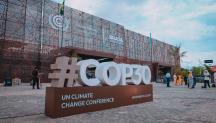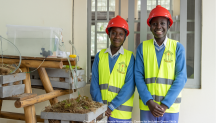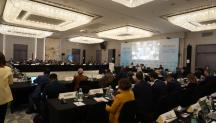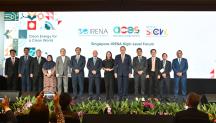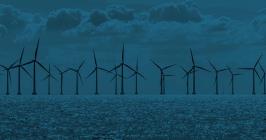
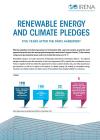
-
-
IRENA (2019), Renewable Energy and Climate Pledges: Five Years After the Paris Agreement, International Renewable Energy Agency, Abu Dhabi
Copied
/-/media/Files/IRENA/Agency/Publication/2020/Dec/IRENA_NDC_update_2020.pdf
Copied
Renewable energy and climate pledges: Five years after the Paris Agreement
Newsletter
With signing of the Paris Agreement, countries pledged to reduce carbon dioxide (CO2) and other greenhouse gas emissions, as well as to adapt to the impacts of climate change. By scaling up renewable energy, countries can sharply reduce one major source of the problem: energy-related CO2 emissions.
Nationally Determined Contributions (NDCs) quantify the commitment of each Party (or signatory that has ratified the Paris Agreement) to reduce CO2 and other greenhouse gas emissions, as well as to adapt to the impacts of climate change.
This brief updates ongoing NDC analysis by the International Renewable Energy Agency (IRENA) based on new pledges submitted in 2020. IRENA supports countries in the implementation and enhancement of their NDCs through accelerated deployment of renewables.
Among the findings:
- To date, 190 Parties have ratified the Paris Agreement and 188 have submitted NDCs to the United Nations Framework Convention on Climate Change (UNFCCC). Of these, 170 NDCs (or 90% of the total) mentioned renewables, while 134 (or 71%) included quantified renewable energy targets.
- While all 134 of those NDCs included renewable energy targets for electricity generation, only 56 included targets for direct heat and for transport, even though decarbonisation is key to achieving the objectives of the Paris Agreement.
- If all renewable power targets included in NDCs were implemented, an additional 1 041 gigawatts (GW) of renewables would be added by 2030, most of which (567 GW) is in Asia. Global installed capacity for renewable power generation would consequently grow almost 42%, from 2 523 GW in 2019 to an estimated 3 564 GW in 2030.
- The year 2020 marks the beginning of the formal NDC submission cycle. Amid the COVID-19 pandemic, however, many countries have missed the deadline. During 2020, only 18 countries have submitted new NDCs. Of these, ten include quantified renewable energy targets, but only five of these targets appear to be more ambitious than in the previous round of NDCs.
- Engagement by IRENA to scale up renewables in NDCs spans 66 countries to date, with a total population of 1.3 billion people and energy-related greenhouse gas emissions approaching 3 billion tonnes of CO2 equivalent per year. These include 17 of the world's least developed countries (LDCs) and 20 small islands developing states (SIDS).
